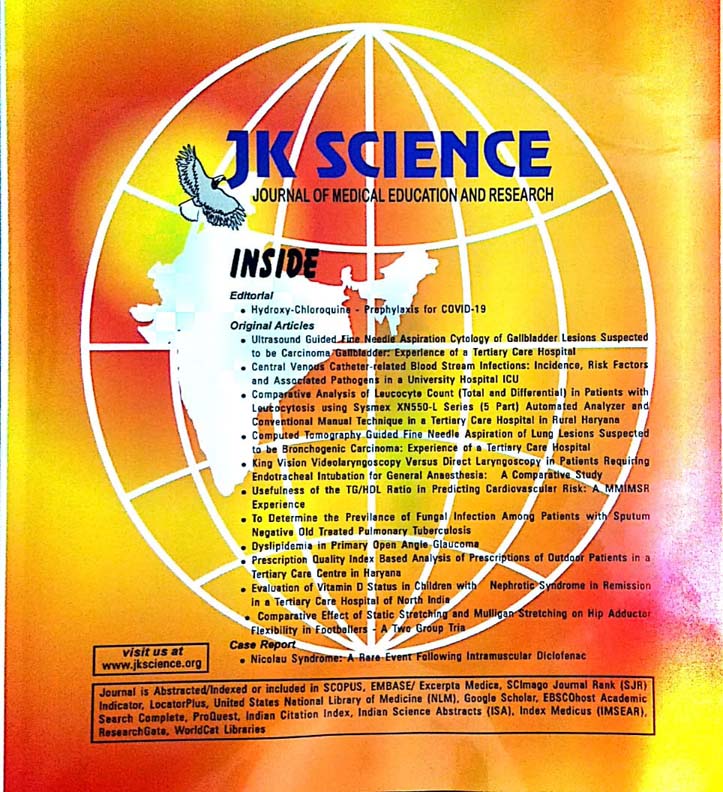Usefulness of Anthropometric Parameters and Non-HDL-C in the Early Screening of PCOS
Keywords:
PCOS, Anthropometric parameters, non-HDL-C, Triglycerides, CVDAbstract
Background: PCOS has been known to predispose to morbidity by its relationship with the metabolic syndrome and CVD. Dyslipidemia and alterations in anthropometric parameters are suggestive of the underlying metabolic risk in PCOS.
Methods: Fifty patients of PCOS (aged 18-50 years) and equal number of healthy females of same age group were selected. Anthropometric measurements and lipid profile were estimated while non-HDL-C was calculated. The comparison amongst the groups was made on the basis of independent ‘t’ test, Pearson’s correlation and AUROC analysis.
Results: Statistical analysis revealed that anthropometric measurements of the cases were significantly higher. Serum triglyceride and non-HDL-C levels were found to be significantly high whereas other lipid parameters could not correlate well. AUROC analysis revealed that the area under the curve for TG and non-HDL-C was found to be 0.653 (95% Confidence interval: 0.542, 0.763) and 0.627 (95% Confidence interval: 0.516, 0.739) respectively.
Conclusion: The anthropometric parameters should be an integral part in the routine assessment of PCOS. Also, the weight management, lifestyle counselling and early screening should start from adolescence to attenuate the severity of PCOS.
Downloads
Downloads
Published
How to Cite
Issue
Section
License
Copyright (c) 2024 JK Science: Journal of Medical Education & Research

This work is licensed under a Creative Commons Attribution-NonCommercial-ShareAlike 4.0 International License.





